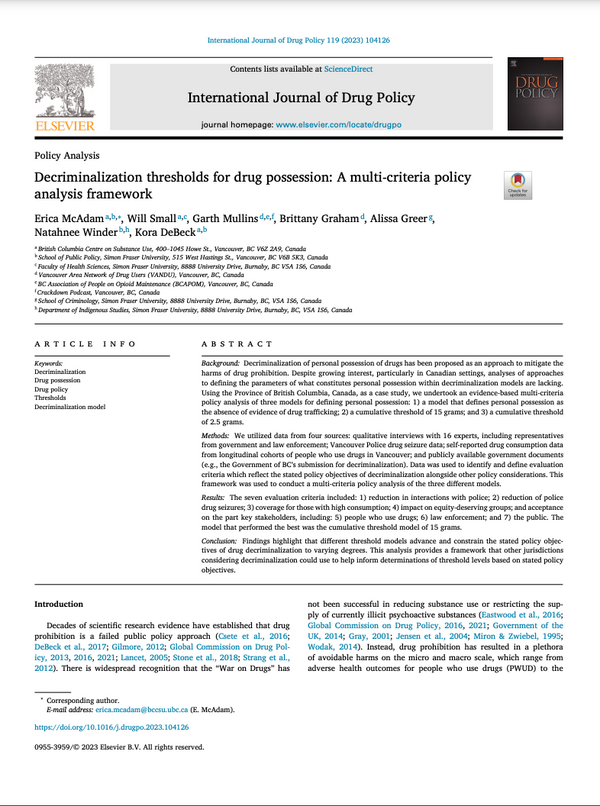Les seuils appliqués à la décriminalisation de la possession de drogues : Un cadre d'analyse politique multicritères
McAdam et al. testent différents modèles de seuils appliqués à la décriminalisation quant à leur adéquation et leur impact sur les groupes concernés. Pour en savoir plus, en anglais, veuillez lire les informations ci-dessous.
Background
Decriminalization of personal possession of drugs has been proposed as an approach to mitigate the harms of drug prohibition. Despite growing interest, particularly in Canadian settings, analyses of approaches to defining the parameters of what constitutes personal possession within decriminalization models are lacking. Using the Province of British Columbia, Canada, as a case study, we undertook an evidence-based multi-criteria policy analysis of three models for defining personal possession: 1) a model that defines personal possession as the absence of evidence of drug trafficking; 2) a cumulative threshold of 15 grams; and 3) a cumulative threshold of 2.5 grams.
Methods
We utilized data from four sources: qualitative interviews with 16 experts, including representatives from government and law enforcement; Vancouver Police drug seizure data; self-reported drug consumption data from longitudinal cohorts of people who use drugs in Vancouver; and publicly available government documents (e.g., the Government of BC's submission for decriminalization). Data was used to identify and define evaluation criteria which reflect the stated policy objectives of decriminalization alongside other policy considerations. This framework was used to conduct a multi-criteria policy analysis of the three different models.
Results
The seven evaluation criteria included: 1) reduction in interactions with police; 2) reduction of police drug seizures; 3) coverage for those with high consumption; 4) impact on equity-deserving groups; and acceptance on the part key stakeholders, including: 5) people who use drugs; 6) law enforcement; and 7) the public. The model that performed the best was the cumulative threshold model of 15 grams.
Conclusion
Findings highlight that different threshold models advance and constrain the stated policy objectives of drug decriminalization to varying degrees. This analysis provides a framework that other jurisdictions considering decriminalization could use to help inform determinations of threshold levels based on stated policy objectives.
Click here to read the full article (restricted access).
Sujets
Régions
Profils associés
- International Journal of Drug Policy
